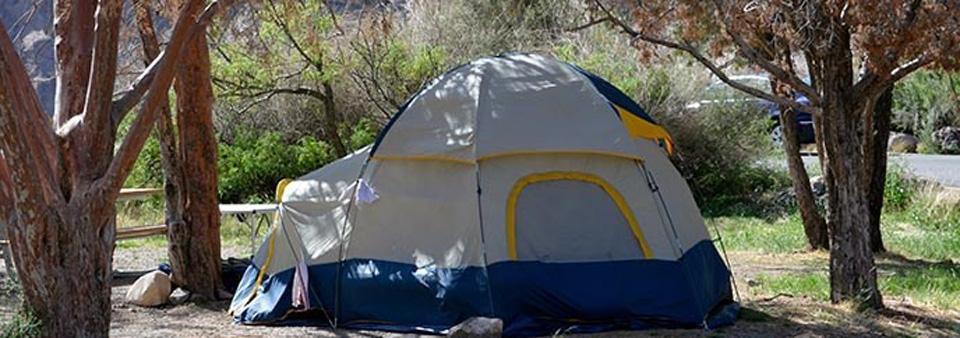
A greater campground reservation system and higher nightly fees could be coming to Big Bend National Park/NPS
Big Bend National Park officials are planning to expand a campsite reservation system in the remote Texas park, and to slightly increase nightly camping fees, and are seeking public feedback.
Developed Campground Reservations
For developed park campgrounds, the park is proposing to significantly increase the number of sites available for reservation as well as the number of months when reservations are accepted. For many, this will greatly reduce the frustration of driving all the way to Big Bend, only to find that all campsites are full.
Backcountry Permit Reservations
Currently, backcountry permits are issued only in person at park visitor centers, and include primitive car camping sites as well as backpacking and river itineraries. During peak seasons, after a very long drive to Big Bend, visitors often encounter long lines to obtain camping permits and fully booked camping options. In order to better serve park visitors by decreasing wait times at visitor centers and to allow for more opportunities to plan ahead, park managers are proposing adding primitive campsites to the reservation system available through www.recreation.gov.
In January 2020, the most popular centrally located roadside sites and backpacking sites would become available for advanced reservations on www.recreation.gov. This initial group of 58 sites is estimated to save 4,000 hand-written permits per year from being written at visitor centers, allowing park rangers more time to provide ranger programs and visitor services. Following this initial phase-in period, additional backcountry sites will be added to gradually expand the sites available for reservation.
Campsite Fee Changes
To offset reservation service costs, more closely match other campsites in the area, and provide improved customer service, the park is proposing modest increases to fees for backcountry permits, developed campgrounds, and group sites. Revenue will be utilized to provide the contracted online reservation service through www.recreation.gov, improve camping and other visitor facilities parkwide, and reduce Big Bend’s $90 million backlog of deferred maintenance.
“We’ve heard loud and clear that people want us to expand the park’s reservation system, and I’m excited that we’re able to respond,” said Superintendent Bob Krumenaker. “This proposal benefits the visitor and will generate increased revenue for the NPS to reinvest in visitor services and deferred maintenance here at Big Bend. While we recognize that in a perfect world there’d be no need to increase fees, the new rates are based on analysis of the cost of camping permits at comparable sites. We’re confident Big Bend’s fees remain reasonable and will not create unreasonable hardship on our visitors. Camping fees remain a small percentage of the cost of a Big Bend vacation, and park visitors – almost 99 percent of whom were not local -- contributed almost $39 million last year to the regional economy of West Texas.”
A summary of the proposed changes are as follows:
* Chisos Basin Campground: increase reservable sites to 2/3rds (#1-40), reservations available year-round, up to 6 months in advance.
* Rio Grande Village Campground: increase reservable sites to 2/3rds (#1-60), reservations available up to 6 months in advance for the period of November 1 through April 15.
* Group campsites at each campground: reservations available year-round up to one year in advance (no change).
* Cottonwood Campground: will remain first come, first served (no change).
* Select backcountry campsites will be added to the reservation system starting in January 2020. The first 58 sites to pilot this change will include the popular, centrally-located primitive car camping sites and the designated backpacking sites in the Chisos Mountains. Reservations will be available year-round, up to 6 months in advance.
* Roadside sites to be included are those at: Grapevine Hills, Paint Gap, Croton Spring, K-Bar, Hannold Draw, Nine-point Draw, Nugent Mountain, Pine Canyon, Robbers Roost, and Twisted Shoe.
Camping fee changes (to begin January 1, 2020):
* Developed campgrounds: $16 per night, $8 with applicable interagency pass (currently $14 per night, $7 with applicable pass).
* Backcountry camping: $12 per night, $6 with applicable interagency pass (currently $12 per permit).
* Group campsites (currently $3 per person per night):
* Sites accommodating up to 14 people, $40 per night.
* Sites accommodating up to 25 people, $60 per night.
* Sites accommodating up to 40 people, $100 per night.
You can comment on these proposed changes at this site by September 15.



Comments
Glad to see changes in backcountry reservations. This will free up staff who have been doing this manually. Also give relief to backcountry hikers and campers who are always worried about getting a backcountry site. It makes reservations fairer and allows the visitor more time to appreciate the park rather than driving back and forth to Panther Junction permit. most important to all changes is getting word out via website and Facebook immediately. Often times the website has been the last to be updated on new regulations.